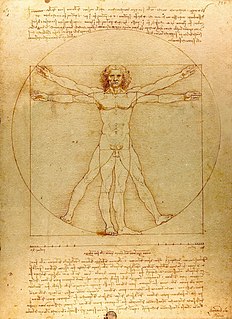
Drawing is a form of visual art in which an artist uses instruments to mark paper or other two-dimensional surface. Drawing instruments include graphite pencils, pen and ink, various kinds of paints, inked brushes, colored pencils, crayons, charcoal, chalk, pastels, erasers, markers, styluses, and metals. Digital drawing is the act of drawing on graphics software in a computer. Common methods of digital drawing include a stylus or finger on a touchscreen device, stylus- or finger-to-touchpad, or in some cases, a mouse. There are many digital art programs and devices.

The Mayflower Compact, originally titled Agreement Between the Settlers of New Plymouth, was the first governing document of Plymouth Colony. It was written by the male passengers of the Mayflower, consisting of separatist Puritans, adventurers, and tradesmen. The Puritans were fleeing from religious persecution by King James I of England.

Plaster is a building material used for the protective or decorative coating of walls and ceilings and for moulding and casting decorative elements. In English, "plaster" usually means a material used for the interiors of buildings, while "render" commonly refers to external applications. Another imprecise term used for the material is stucco, which is also often used for plasterwork that is worked in some way to produce relief decoration, rather than flat surfaces.

A herbarium is a collection of preserved plant specimens and associated data used for scientific study.

Baron Sir Ferdinand Jacob Heinrich von Mueller, was a German-Australian physician, geographer, and most notably, a botanist. He was appointed government botanist for the then colony of Victoria (Australia) by Governor Charles La Trobe in 1853, and later director of the Royal Botanic Gardens, Melbourne. He also founded the National Herbarium of Victoria. He named many Australian plants.

Kirstenbosch is an important botanical garden nestled at the eastern foot of Table Mountain in Cape Town. The garden is one of 10 National Botanical Gardens covering five of South Africa's six different biomes and administered by the South African National Biodiversity Institute (SANBI). Prior to 1 September 2004, the institute was known as the National Botanical Institute.

Cabinets of curiosities were collections of notable objects. The term cabinet originally described a room rather than a piece of furniture. Modern terminology would categorize the objects included as belonging to natural history, geology, ethnography, archaeology, religious or historical relics, works of art, and antiquities. The classic cabinet of curiosities emerged in the sixteenth century, although more rudimentary collections had existed earlier. In addition to the most famous and best documented cabinets of rulers and aristocrats, members of the merchant class and early practitioners of science in Europe formed collections that were precursors to museums.
Johann Friedrich Klotzsch was a German pharmacist and botanist.
Monoprinting is a type of printmaking where the intent is to make unique prints, that may explore an image serially. Other methods of printmaking create editioned multiples, the monoprint is editioned as 1 of 1. There are many techniques of mono-printing, in particular the monotype. Printmaking techniques which can be used to make mono-prints include lithography, woodcut, and etching.

Hendrik Adriaan van Rheede tot Drakenstein was a military man and a colonial administrator of the Dutch East India Company and naturalist. Between 1669 and 1676 he served as a governor of Dutch Malabar and employed twenty-five people on his book Hortus Malabaricus, describing 740 plants in the region. As Lord of Mydrecht, he also played a role in the governance of the Cape colonies. Many plants such as the vine Entada rheedii are named for him. The standard author abbreviation Rheede is used to indicate this person as the author when citing a botanical name.

William Henry Harvey, FRS FLS was an Irish botanist and phycologist who specialised in algae.

Ernest Edward Galpin (1858–1941), was a South African botanist and banker. He left some 16,000 sheets to the National Herbarium in Pretoria and was dubbed "the Prince of Collectors" by General Smuts. Galpin discovered half a dozen genera and many hundreds of new species. Numerous species are named after him such as Acacia galpinii, Bauhinia galpinii, Cyrtanthus galpinii, Kleinia galpinii, Kniphofia galpinii, Streptocarpus galpinii and Watsonia galpinii. He is commemorated in the genus Galpinia N.E.Br. as is his farm in the genus Mosdenia Stent.
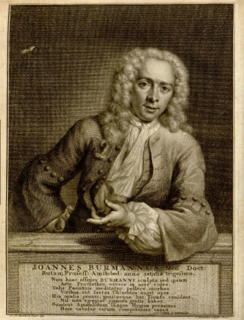
Johannes Burman, was a Dutch botanist and physician. Burman specialized in plants from Ceylon, Amboina and Cape Colony. The name Pelargonium was introduced by Johannes Burman.
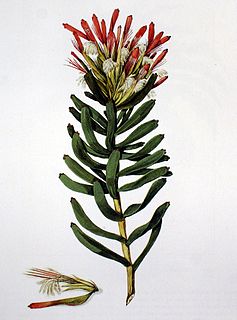
Henrik Bernard Oldenland aka Heinrich Bernhard Oldenland (c.1663–c.1697) was a German-born South African physician, botanist, painter and land surveyor, and is denoted by the author abbreviation Oldenl. when citing a botanical name.
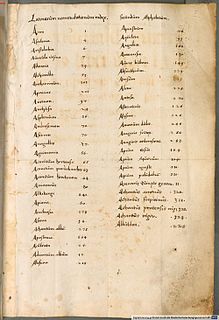
Hieronymus Harder was a German botanist and teacher of Latin.
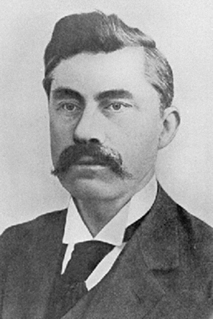
Contagium vivum fluidum was a phrase first used to describe a virus, and underlined its ability to slip through the finest-mesh filters then available, giving it almost liquid properties. Martinus Beijerinck (1851-1931), a Dutch microbiologist and botanist, first used the term when studying the tobacco mosaic virus, becoming convinced that the virus had a liquid nature.

Johann Hieronymus Kniphof was a German physician and botanist.
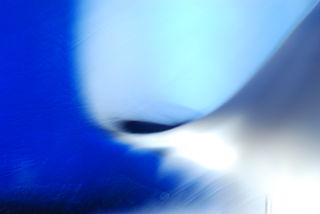
Abstract photography, sometimes called non-objective, experimental or conceptual photography, is a means of depicting a visual image that does not have an immediate association with the object world and that has been created through the use of photographic equipment, processes or materials. An abstract photograph may isolate a fragment of a natural scene in order to remove its inherent context from the viewer, it may be purposely staged to create a seemingly unreal appearance from real objects, or it may involve the use of color, light, shadow, texture, shape and/or form to convey a feeling, sensation or impression. The image may be produced using traditional photographic equipment like a camera, darkroom or computer, or it may be created without using a camera by directly manipulating film, paper or other photographic media, including digital presentations.
Winsome Fanny Barker was an South African botanist and plant collector noted for her work as Curator building the collection at the herbarium of the Kirstenbosch National Botanical Garden, as well as her research on Amaryllidaceae, Liliaceae and Haemodoraceae.

Protea effusa, sometimes known as the scarlet sugarbush, is a flowering plant which belongs to the genus Protea. The plant is endemic to the Western Cape province of South Africa. In the Afrikaans language the vernacular name blosrooisuikerbos has been recorded for this plant.


















